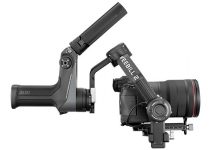Blackmagic has now given us another option in their affordable camera lineup with the full-frame Cinema Camera 6K. This now goes up against the Super35 Pocket 6K series and it isn’t quite as simple as choosing a format.
The Pocket Cinema Camera 6K Pro in particular has a few distinct features that earn it that “Pro” moniker and might still make it a better choice for certain filmmakers.
If you already have a Pocket 6K Pro and are wondering whether the new Cinema Camera 6K is worth checking out or if you are shopping for your first camera then this comparison from Of Two Lands might help you out.
The Similarities
The new full-frame 6K looks very similar to the Pocket 6K Pro. The body design is close enough that many cages and accessories should still work.
The full-frame is a touch slimmer and lighter thanks to having the L-Mount. Otherwise, they seem to share a lot from a design perspective.
They have the same 5” tilting screen, similar menus, the same inputs/outputs, and batteries.
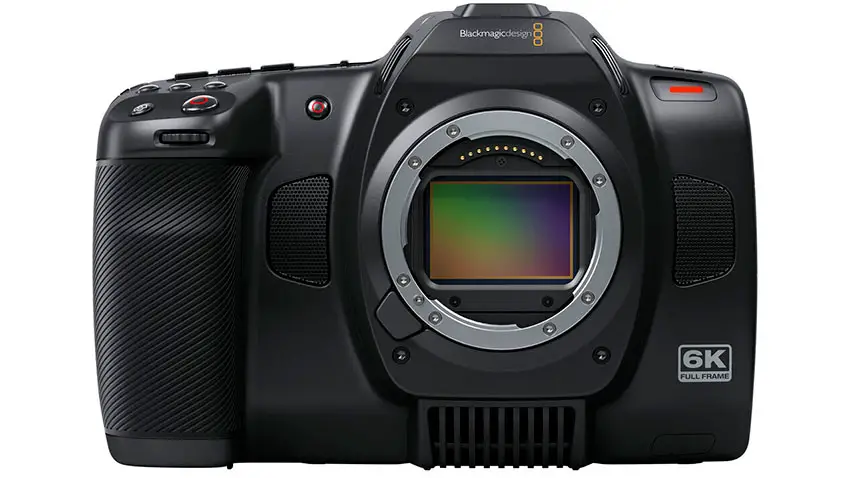
Image Credit: Blackmagic Design
Interestingly enough, they actually have the same dual native ISO settings of 400 and 3200 and the same 13 stops of dynamic range. The new full-frame 6K will even work with existing accessories like the EVF and battery grip.
Price is also basically the same at just under $2,600.
The Differences
Let’s start with the obvious differences. The new Cinema Camera 6K is full-frame and has an L-Mount while the Pocket 6K Pro has a Super 35mm sensor and the Canon EF mount. The full-frame sensor is noticeably bigger.
Also, the full-frame sensor has a built-in optical low-pass filter which the Pocket 6K Pro does not. On the other hand, the 6K Pro has built-in ND filters while the full-frame 6K does not.
Codecs are where things differ as well. The full-frame 6K is limited to just Blackmagic RAW while the Pocket 6K Pro offers ProRes as an option. The full-frame 6K will be able to record proxies at the same time though.
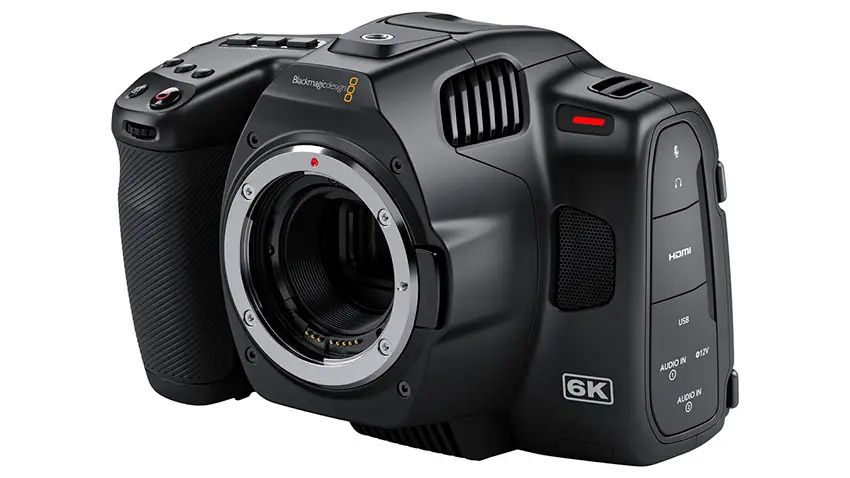
Image Credit: Blackmagic Design
Resolutions are slightly different. The full-frame 6K will record in open gate at 6048 x 4032 and the Pocket 6K will record at 6144 x 3456. Maximum frame rates at the top resolutions are limited to 36 fps for full-frame and 50 fps for the Pocket.
Blackmagic has made changes to the media options as well. The Pocket 6K Pro has a CFast 2.0 and SD while the full-frame 6K has a single CFexpress Type B.
Technically, the full-frame 6K is a different series with the simpler name of “Cinema Camera 6K” while the 6K Pro is part of the Pocket Cinema Camera series.
The Pros of the 6K FF
The biggest reason to go for the full-frame 6K is the larger 6K full-frame sensor. The image looks great and the sample footage provided does a good job of showing that off.
The camera offers many of the same functions as the Pocket series with that full-frame sensor including open gate recording and anamorphic modes.
The larger sensor also offers the flexibility to shoot at Super 35mm or Super 16mm settings if you want.
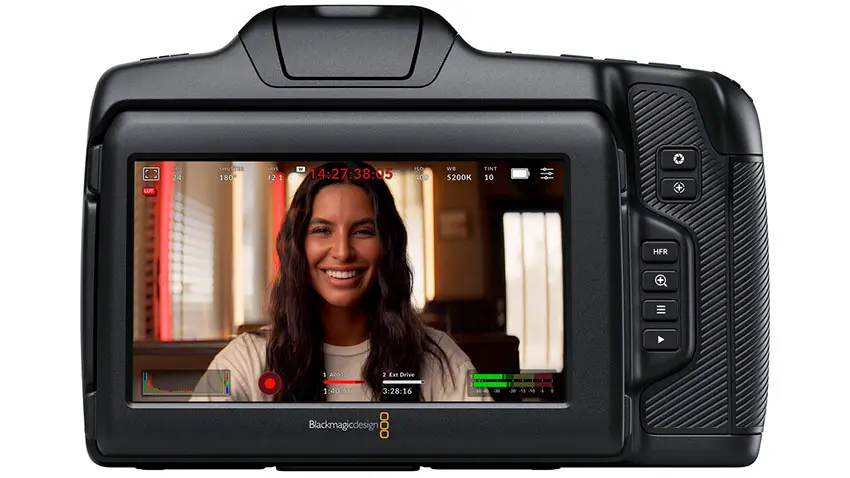
Image Credit: Blackmagic Design
Blackmagic has finally moved this system to a more versatile mirrorless mount with the adoption of the L-Mount on the 6K FF. This means you can adapt all the DSLR and cinema glass you want while also using native L-Mount glass. It allows for many more options.
Having the low-pass filter is an interesting benefit for this camera and we have only just seen it used on other Blackmagic cameras. It was required to get Netflix approval for the URSA 12K, so it may be a smart play to include it here.
The Pros of the 6K Pro
Internal ND filters are hugely beneficial. The Pocket 6K Pro added them and it remains a huge advantage for this model.
This simplifies your workflow dramatically and reduces the amount of gear you need to bring on every shoot. ProRes is another advantage. It can be a faster workflow and is more ready for sharing.
Having a Super 35mm sensor can be its own advantage in many situations. The readout speed of this sensor is faster than the full-frame model for less rolling shutter and there are more lens options to choose from.
If you want more telephoto reach you get an advantage there thanks to crop factor.
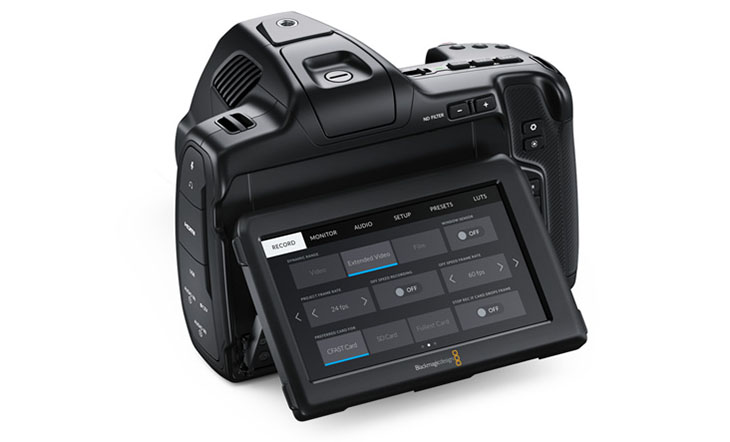
Image Credit: Blackmagic Design
The Canon EF mount is still one of the most well supported mounts on the market. There is a huge market of new and used glass so you can probably find some good deals.
Footage Comparison
Using the same lens on both cameras you can see how both cameras handle the shot. You can quickly see a difference in crop factor. The extra field of view with wide angle lenses is a huge advantage for the 6K FF.
The 6K full-frame appears to be a bit sharper, too. There is some rolling shutter, but it is manageable depending on what you are shooting.
Is the Full-Frame Worth the Upgrade?
Unless you absolutely can’t live without internal NDs or have a massive Super 35mm lens collection then it just makes sense to go with the full-frame 6K model these days. The image and versatility of that larger sensor are excellent.
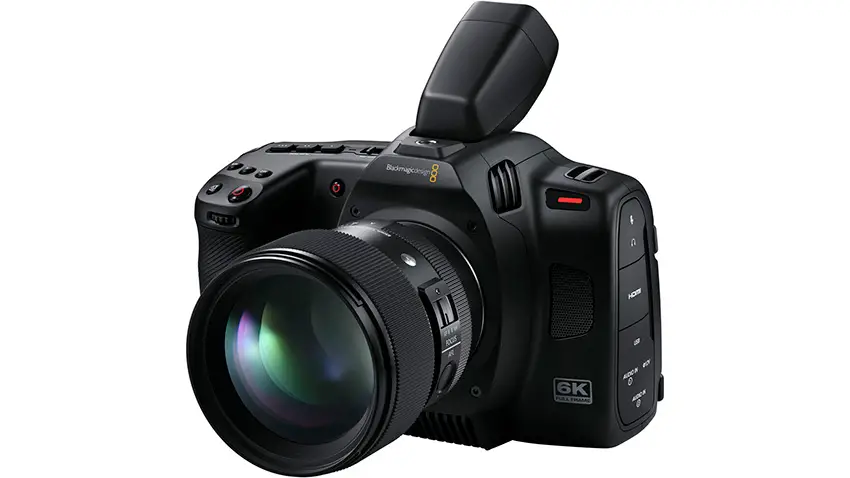
Image Credit: Blackmagic Design
Since the cameras are the same price it is a very direct comparison many will make. If you already have a 6K Pro you shouldn’t be running out the door, but for your first or next camera it is worth considering going full-frame.
Which of these cameras would you pick today?
[source: Of Two Lands]
Order Links:
Disclaimer: As an Amazon Associate partner and participant in B&H and Adorama Affiliate programmes, we earn a small comission from each purchase made through the affiliate links listed above at no additional cost to you.


